- Narragansett Beer Guide: Everything to Know About This Historic Brewery - November 9, 2022
- 6 Best Breweries in Duluth MN: Can’t Miss Spots - November 9, 2022
- Best Breweries in Chicago: Where to Drink in the Windy City - October 28, 2022
These days, people want more than their average drinking beer. They want something that packs flavor with a decent ABV. This is one of the many reasons why stout beer alone will be worth over $15 billion by 2027.
But what exactly is a stout? Contnue reading our Stout Guide to find out.
What Is a Stout?
A stout is a top-fermented dark beer. This style of beer is one of the most versatile, thanks to the use of roasted barley. This is why there are so many variations (we will cover this in a later section).
We will cover the history of the stout in a later section, but understand that stouts derived from porters as a stronger version of the beer style. The word “stout” derives from the word “strong,” which is how people back in the 17th century described this beer style (as opposed to a dark beer).
While there are stouts with a high ABV, the stout beer style has grown tremendously in the last few centuries. You’ll find everything from dry to sweet stouts on the market.
There are stouts with low ABV and some with the highest ABVs in all of beer history. You’ll also find stouts with varying complexity, yet they always have that toastiness from the barley used during the brewing process.
The History of the Stout
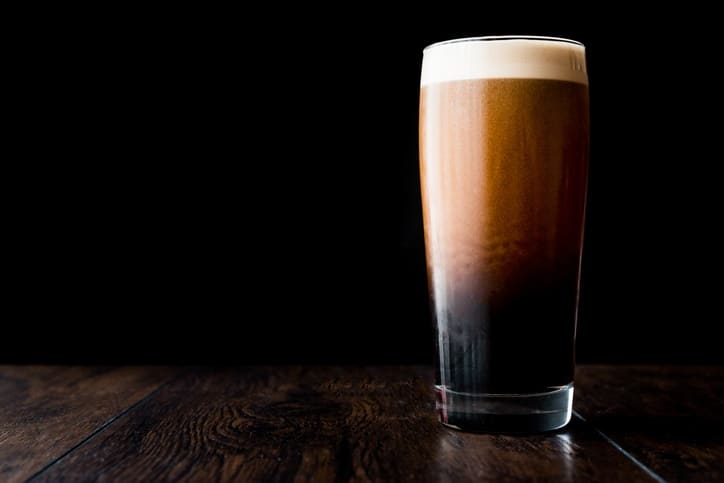
As mentioned in the last section, stouts emerged several centuries ago. But when they were first brewed is a little fuzzy. One source I read said the first stout was introduced in the 17th century while another source I read said they evolved in the 19th century.
Either way, we do know one thing for a fact: the style was first brewed in London and is the child of the already-popular porter. With roasted barley and complex malt profiles, the stout became fiercely popular among England’s working class.
However, the Irish perfected the stout. They emerged with the stout brewed with roasted malt in the mid-20th century.
Different Types of Stouts
When you walk into a tasting room or tap house, you’ll likely see multiple types of stouts available. Here’s a breakdown of each.
English
Let’s cover the stout that started it all. The English stout is a classic, brewed with roasted barley. This beer style has a relatively low ABV compared to other stouts — 4%-7%, on average. Most English stouts are jet black in color, though you’ll find a few brown ones.
This beer has a very dark and toasty flavor. Depending on the beer you drink, you may get a taste of bitterness from the hops with a hint of sweetness from the malt. However, most English stouts aren’t happy — they’re just added in for balance.
The English stout has also always been experimental. You’ll often taste notes of coffee or chocolate in a traditional English stout, which paved the way for those specific brews (we will cover those in a later section).
Irish
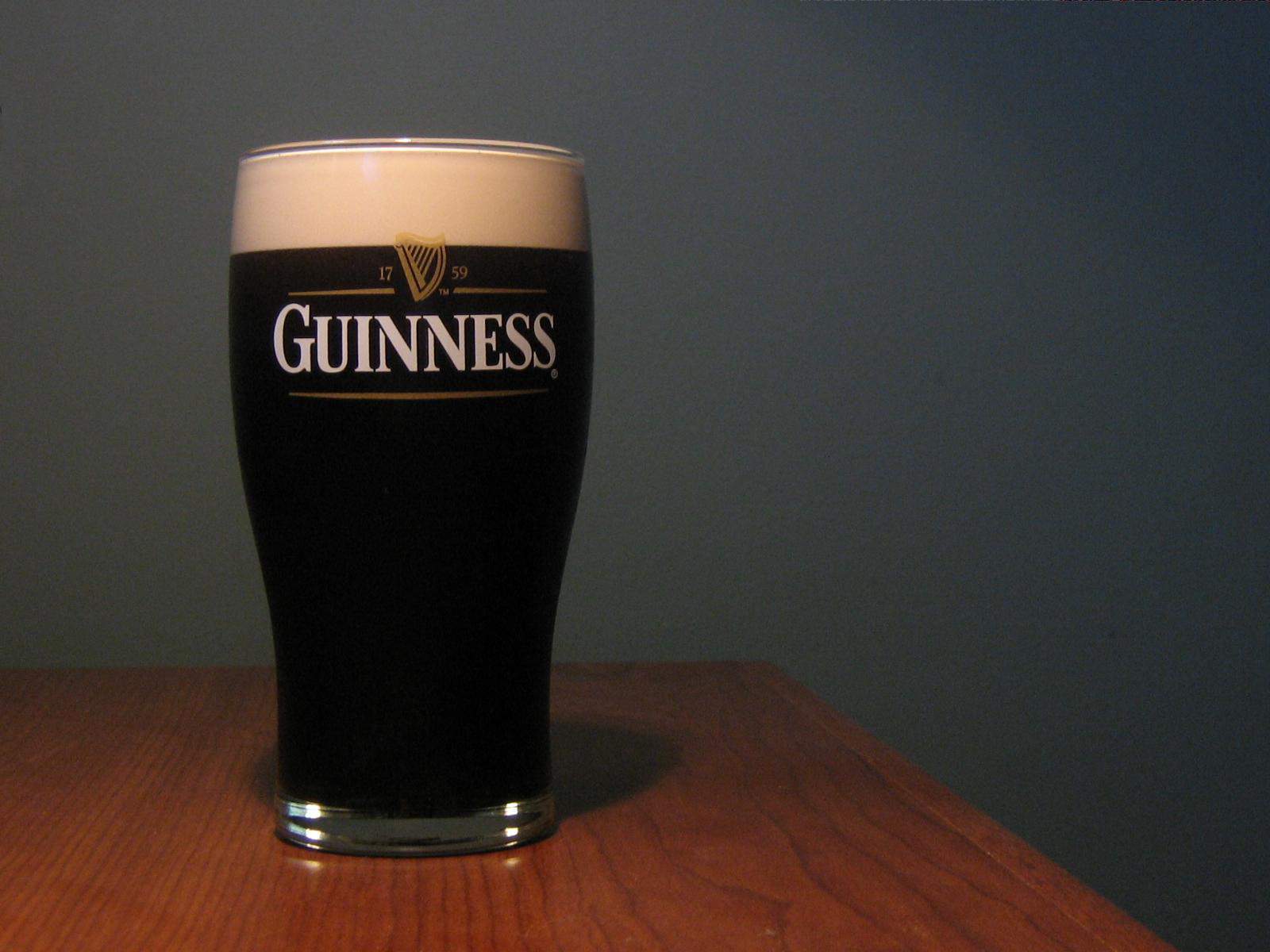
We all know nothing tastes better after a long day than a pint of Guinness. That’s why many argue the Irish reign in the stout. Irish stouts are famously dry, which means they don’t have the malty sweetness that English stouts have.
The main issue with Irish stouts is the lack of malts sacrifices the ABV. Most Irish stouts are pretty weak, at around 4%-5%.
But like the stout style generally has, the Irish style has evolved since Guinness first made their Draught. You can find Irish stouts with hints of coffee, chocolate, maltiness, and even toffee. They’re often darker in color, though they have a rich and smooth flavor.
But what really makes an Irish stout famous is the nitro smoothness. Most Irish stouts on tap are on nitro. The beer is finer with low carbonation. The beer has a very creamy feeling and has an overall gentler mouthfeel.
Russian Imperial
When you make a beer for Russians, it better be the brawniest beer you can imagine! At 8%-12%, Russian Imperial stouts are some of the strongest you can drink. This beer was actually first brewed by English brewers for the Russian Imperial Court back in the 1800s.
Russian Imperial stouts are some of the most complex beers out there. They’re extremely dark and malty, though you’ll taste flavors such as chocolate, fruit, and slight hops.
The taste is extremely rich and this full-bodied beer is not one for the faint of heart. A Russian Imperial stout is one to drink slowly — not only because of the complex flavor but also because of the high alcohol content.
American

Some of the most diverse stouts you’ll ever drink are brewed in the USA. While all Americans brew their stout with the standard roasted barley, this is where the similarities end. You’ll find different stouts brewed with vanilla and even chilies. Many American stouts are barrel-aged, which we will cover later.
No matter what US stout you drink, it’s likely one of the most flavorful beers you’ll ever have.
Oatmeal
Is this a stout you drink with your morning bowl of oatmeal? Not really. Oatmeal stouts are brewed with, well, oats. The oats give the beer a silky texture and complement the sweet malty flavor. Oatmeal stouts also have a signature deep brown and black color.
While the taste of oats isn’t prominent in this beer style, you may taste some bready and nutty flavors. Many oatmeal stouts also have notes of chocolate and coffee.
The only problem with oatmeal stouts is they do take away from the ABV. Most oatmeal stouts have 4%-7% ABV.
Oyster
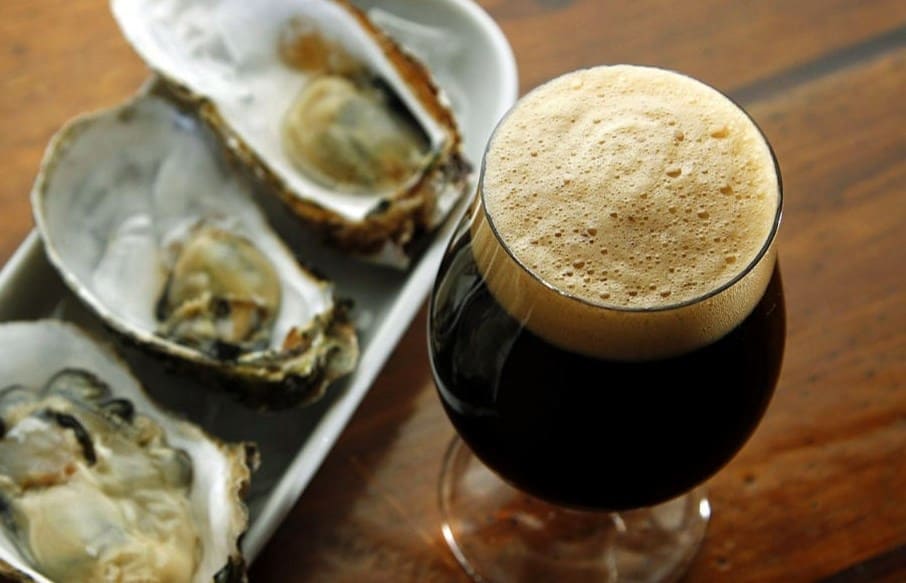
Oyster stout sounds weird, right? Well, oyster stouts are exactly what you think — stouts brewed with oysters. The idea came from Englishmen, who would slurp on oysters while drinking a stout. Someone then had the crazy idea to brew a stout with oysters, and that person changed history forever.
So, does that mean oyster stouts taste like fish? Not exactly. The oysters add a bit of the body to a stout. That’s why oyster stouts are typically dark brown in color as opposed to black. However, all breweries make oyster stouts differently.
While oyster stouts aren’t the most popular stout variety, they’re popular enough to be a staple in the stout style. Oyster stouts vary in ABV from 5%-9%.
Milk
Want a stout that’s more on the sweet side? Drink a milk stout! Milk stouts have low bitterness, some brewers even adding lactose to the beer. From here, a milk stout is the same as any other stout.
You can find different types of milk stouts, ranging in flavors such as chocolate, roastiness, and coffee. But milk stouts still have that sweeter profile, as if you were drinking a beer milkshake.
The sweetness does compromise a bit of the ABV strength. Most milk stouts have 4%-6% ABV and are dark brown to black in color.
Pastry

While pastry stouts are sweet stouts, they take it a step farther than the milk stout. A pastry stout is inspired by, well, desserts! Whether you want an oatmeal cookie stout or a chocolate cake stout, you can find just about all types of pastry stouts.
Pastry stouts are brewed with unique flavors such as coconut, cinnamon, fruit, nuts, and cacao. You may even find stouts with complex and never-used-before notes, inspired by cheesecakes and other desserts.
Since this stout style is so complex, you’ll find pastry stouts with all different ABV levels.
Coffee
Brewers fell in love with mixing coffee in with the classic stout. So much so to where they developed their own category dedicated to brewing stouts with coffee.
Like a regular stout, coffee stouts have a complex malt profile but work with the bittersweet taste of chocolate.
Check out Our Comprehensive Guide to learn how to find the best Coffee stouts.
Barrel-Aged

Barrel-aged stouts are exactly what they sound like — they’re stouts aged in wooden barrels. The same magic happens when bourbon is aged in barrels — the natural notes of vanilla and oak merge in with the beer to add more depth to any stout.
Stout vs Porter
Even though both of these beers are labeled separately, there aren’t many differences between stouts and porters.
The main difference lies within the rules of brewing a stout. Using black and roasted malt will give the stout its robust flavor and high ABV (though not all stouts are potent). Porters are characterized by their use of malted barley, which makes them more of a versatile beer.
Rules When Brewing a Stout
Want to brew your own stout? There are two important rules you have to follow:
Requires Black and Roasted Malt
There’s a reason why stouts have that dark color. They’re brewed with black malts that are roasted. If you don’t include these malts, then you’re brewing a porter.
Need Ale Yeast
Stouts are a type of ale, so you’ll need ale yeast. Yes, ale yeast typically gives a beer a fruity aroma and flavor. That’s not a problem, since a stout needs ale yeast to remain authentic. Otherwise, you’re drinking a black lager.
Can You Eat Food While Drinking a Stout?
Sure! Why not? However, you may not want to drink a super heavy and strong stout with food. The classic stout with food combination is an Irish stout with, well, anything. Maybe a Shepard’s Pie? At least beef stew, pork, and any hearty meat dishes in general.
There are also special stouts that match perfectly with certain foods. For example, pastry stouts are popular with desserts. And of course, oyster stouts with oysters or any type of seafood.
Are There Light Stouts?

The Irish dry stout is the lightest stout around. You can drink an Irish dry stout every day and not feel full and overwhelmed. They’re low in ABV and are lighter-bodied than other stouts, but they still have that roasty flavor.
Are Stouts Bitter?
Most stouts are typically not bitter, though many brewers include hops in the brew to balance out the maltiness.
Even if you don’t like this little bit of bitterness, you’re better off drinking a sweeter stout such as a milk stout. You’ll mainly get hints of chocolate, roastiness, and coffee. The lactose will also add a bit of sweetness to take away from any bitterness.
Because of the sweetness and complex flavors, this is a good beer for those who don’t like stouts or beer, in general.
Our Stout Recommendations
Now that you know more about the stout style, it’s time to try some stouts! Here are the stouts that I personally love.
Brasserie Dieu du Ciel Péché Mortel
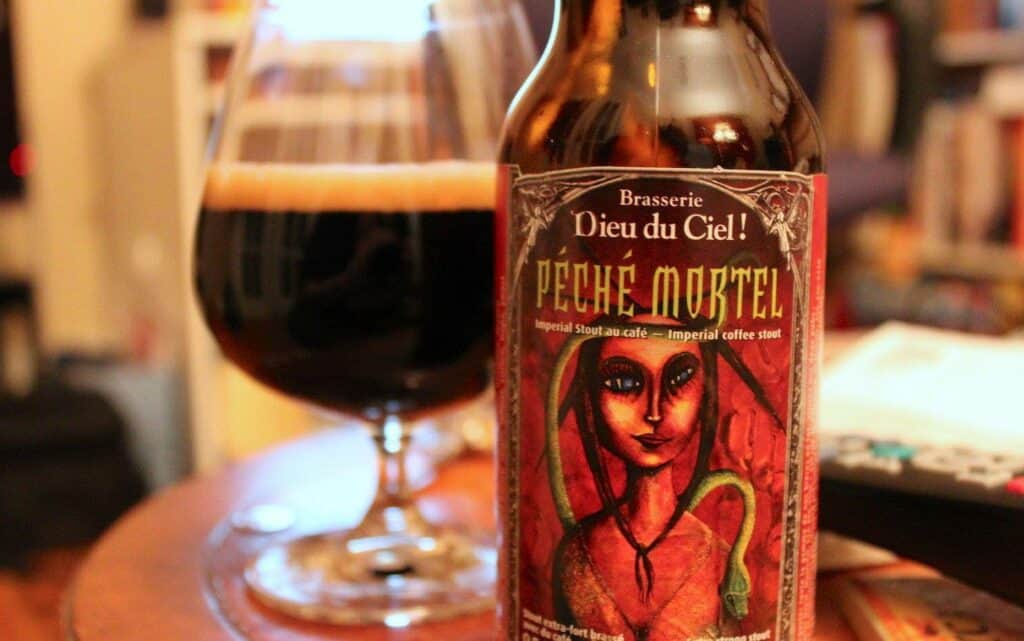
Péché Mortel (translates to “mortal sin” in English) is a very dense, dark beer with a complex flavor profile. This is an American imperial stout, brewed with coffee to amplify the robust and bitter taste.
With that being said, it’s no easy-drinking beer. This is one of my favorite stouts from Dieu du Ciel, but it’s one you definitely have to sip. And at 9.5% ABV, this is definitely one that will leave you a little too intoxicated if you’re not careful.
Brasserie Dieu du Ciel Aphrodisiaque

This is by far one of the most unique stouts I’ve ever had. For a dessert beer, it’s very smooth without overdoing the sweetness.
This is a sweet stout, with a complex flavor profile that includes dark chocolate, vanilla, and roasted malt. What I really love about this beer is how you get the strong taste of vanilla, without the beer being too sweet. In addition, all of the other flavors are balanced really well.
The beer is also brewed with first-rate vanilla beans and fair-trade cocoa, so there’s also that!
Stone Brewing Xocoveza

Xocoveza (pronounced choco-veza) is an award-winning beer that has to be one of my top 5 stouts from Stone Brewing, which is also one of my favorite breweries of all time.
Xocoveza is best described as a “mocha stout” because you get a taste of roasted coffee beans with chocolate. This beer is also inspired by Mexican hot chocolate, so you get the taste of vanilla, pasilla peppers, nutmeg, and cinnamon.
Guinness Draught Stout
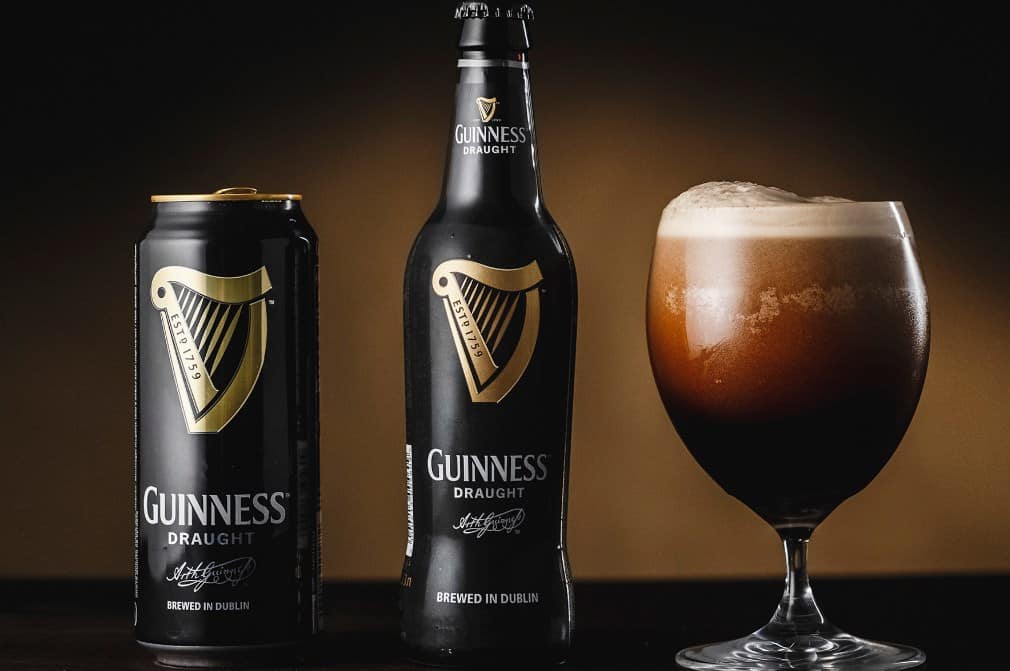
Okay, I had to include this one in here. Guinness Draught was first introduced in 1759 and has been an integral part of Ireland’s beer culture ever since.
I love Guinness because it’s a dark and malty beer, yet it’s so crisp and easy to drink. However, you have to drink it fresh from the tap for that perfect smooth mouthfeel. Otherwise, Guinness in the can and bottle tastes creamy.
Founders Breakfast Stout
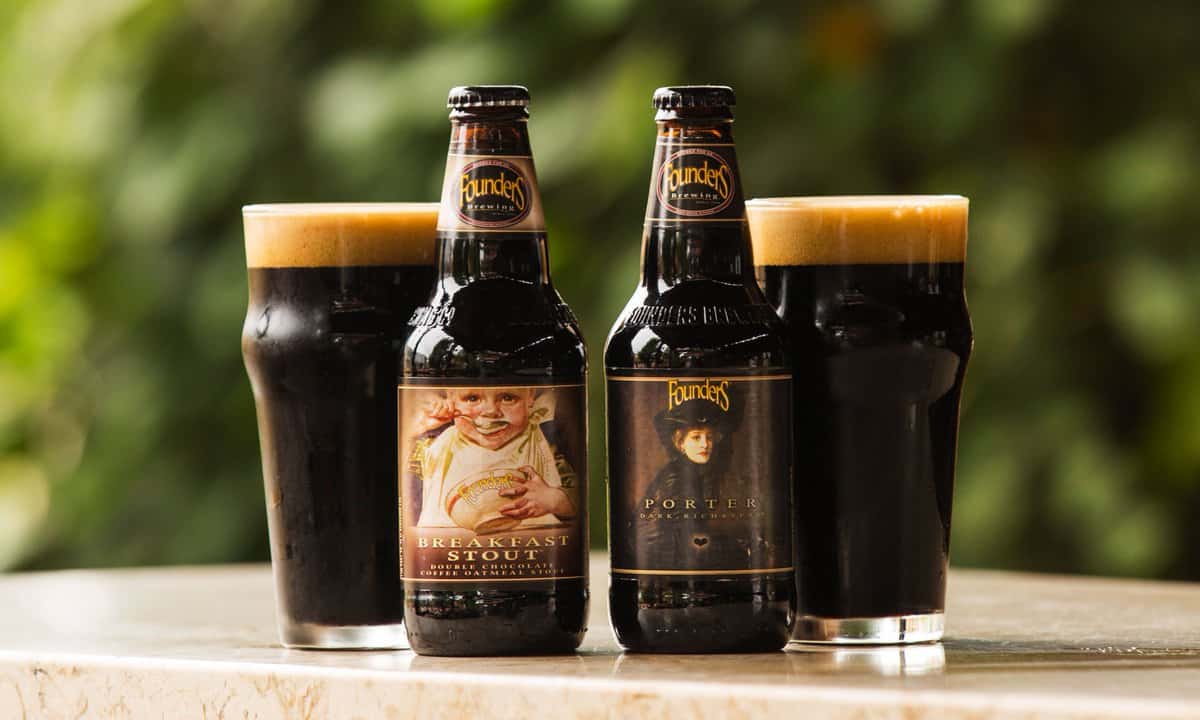
This oatmeal stout is perfect if you love a good coffee beer! I actually mentioned this one in my Oatmeal Stout Guide, and it’s worth it to mention again.
Brewed with coffee, bitter chocolate, and oats, this beer packs the flavor but is smooth enough for even someone who’s new to stouts. Brewed with two types of coffee and finished with notes of cinnamon, you’ll feel like you’re drinking a cup of freshly brewed coffee.
Malédiction Milk Stout

This milk stout from brasserie Malédiction combines the flavors of the rich flavor of chocolate with vanilla that will truly blow your taste buds away. You’ll first taste the notes of chocolate and coffee, and the sweet vanilla taste will linger. This is definitely a beer you will want to sip and enjoy.
Brasseurs du Monde Le Seigneur Noir

If you prefer your stouts black, you’ll love Brasseurs du Monde’s Le Seigneur Noir (translates to “the dark lord”).
Because of the roasted malt, the beer is completely opaque. While dark chocolate and orange sound like a weird flavor combination, the result is the perfect amount of bitterness with a touch of sweet citrus. The dark chocolate taste lingers, so this is perfect for those who prefer their stouts on the bitter side.
At 11.5% ABV, this is a beer you have to tread carefully when drinking. This beer is also on the heavier side, so it’s ideal for sipping. It’s a perfect drink for a cold night.
FAQs
Question: How Would You Describe a Stout?
Answer: Stouts are dark in color and have a thick mouthfeel. While all stouts are different, most are brewed with chocolate and coffee. You should also not taste much hoppy bitterness, though some stouts have a bitter flavor thanks to dark chocolate and coffee notes.
Question: What’s an Extra Stout?
Answer: Extra Stout is actually a Guinness beer. This is a dry Irish stout that was first brewed in 1821. It’s more carbonated than the traditional Guinness and has a maltier and hoppier flavor. It’s a bittersweet beer with more roasted notes, so it’s not as smooth as traditional Guinness.
Question: Are Stouts Healthy?
Answer: Yes and no. Stouts, as with all beers, contain antioxidants. However, dark beers contain significantly more antioxidants than light-colored beers. It’s difficult to find exactly why, but this source says the high temperatures used in the roasting process for malts fuels the formation of antioxidants.
In addition, stouts contain fewer calories than other beers. Otherwise, stouts don’t offer much else in terms of nutrition.
Question: What Are Some Other Healthy Beers?
Answer: This list says these beers are also healthy:
• Yuengling Light Lager
• Abita Purple Haze
• Guinness Draught
• Sam Adams Light Lager
• Deschutes Brewery Da Shootz
• Full Sail Session Lager
• Pacifico Clara
• Sierra Nevada Pale Ale
Question: Can Stouts Get You Drunk?
Answer: As with all beer, yes, stouts can get you drunk. You especially want to be careful when drinking stouts because some have high alcohol contents, resulting in reaching inebriation faster. However, some stouts have a very low ABV. In this case, you may need to drink several beers in order to get drunk.
Question: What Happens If You Drink Too Many Stouts?
Answer: Well, in reference to our last question, you’ll get drunk! But as with all alcohol, if you drink several stout beers every day, you risk developing several diseases. Common examples include pancreatitis and liver disease.
Question: Why Do Stouts Upset My Stomach?
Answer: Were you enjoying a stout and suddenly started feeling a little queasy? Hey, the same thing has happened to me before.
And there’s a reason why. Ale yeast isn’t good for your gut. In addition, the high alcohol content of some stouts can irritate the stomach. This may result in less than desirable effects, even diarrhea.
Question: Are Stouts Better Than Lagers?
Answer: This is based on personal preference. Stouts typically have higher alcohol contents than lagers, though this varies. Some other people prefer the taste of darker and robust beers over lighter lagers. I suggest you try both and get an opinion for yourself.
Question: What’s the Worst Beer?
Answer: Looking at this source, they consider the worst beers to be:
• Natural Light
• Milwaukee’s Best Premium
• Natural Ice
I definitely agree with Natural Light and Ice being awful. I would personally replace Milwaukee’s Best with Icehouse, but that’s just me.
Discover Stout Beer
The stout beer style is becoming more popular. Stouts are dark ales brewed with ale yeast and roasted malt. They’re called “stouts” because they were originally brewed as stronger versions of porters, though there are stouts that have lower ABVs.
Because of how popular this style is, there are so many stouts out there. I definitely suggest you try the stouts featured on my list as well as other stouts out there!
In addition, I suggest everyone tries oatmeal stouts. When stouts are brewed with oats, the oats give a full-bodied stout a smoother and silkier mouthfeel. You can click here and learn more about oatmeal stouts.
Read more related reviews and guides:
